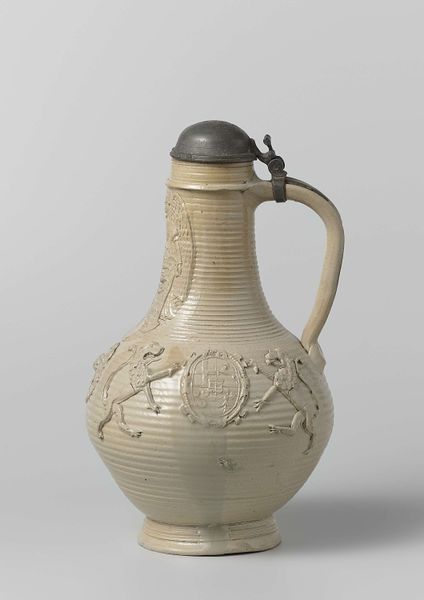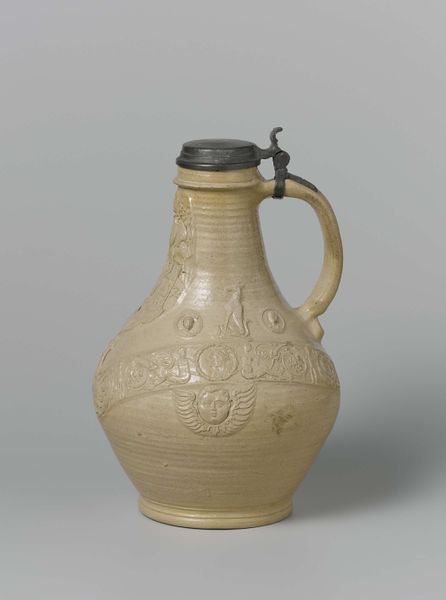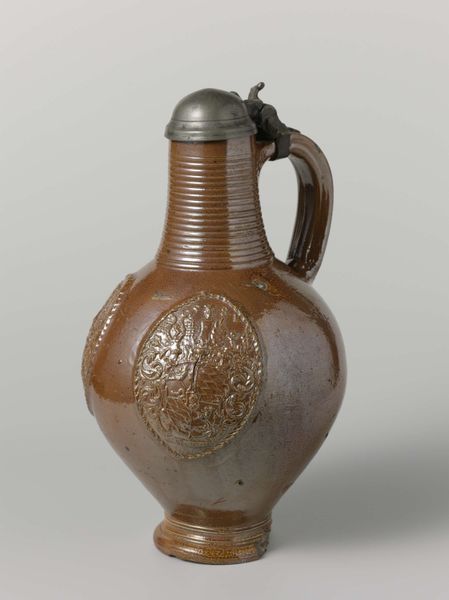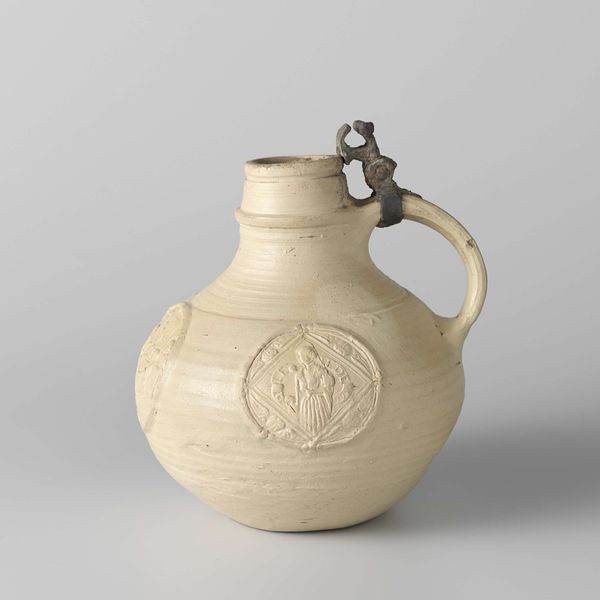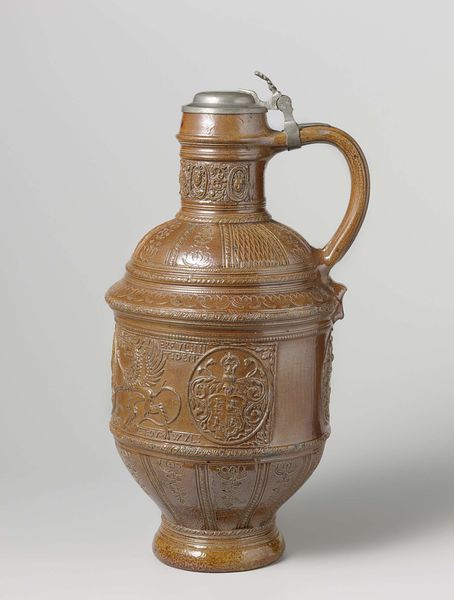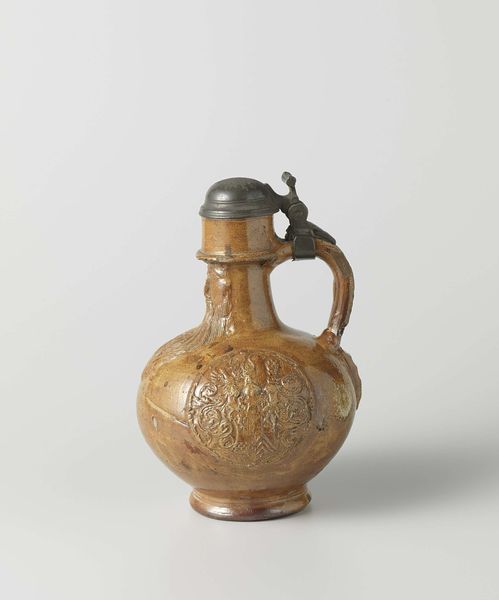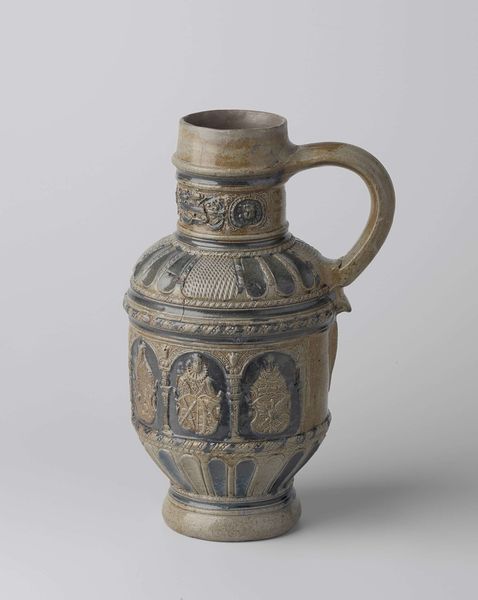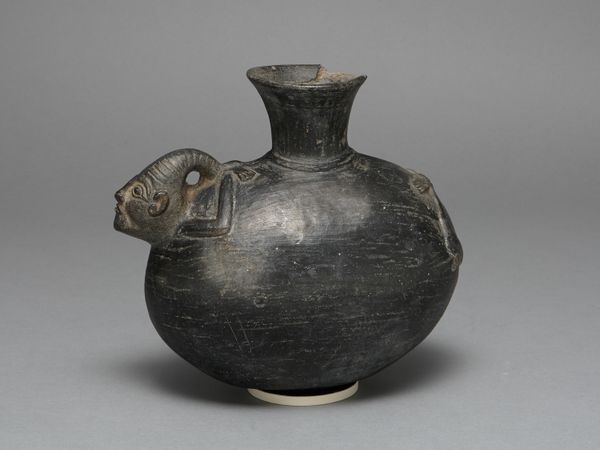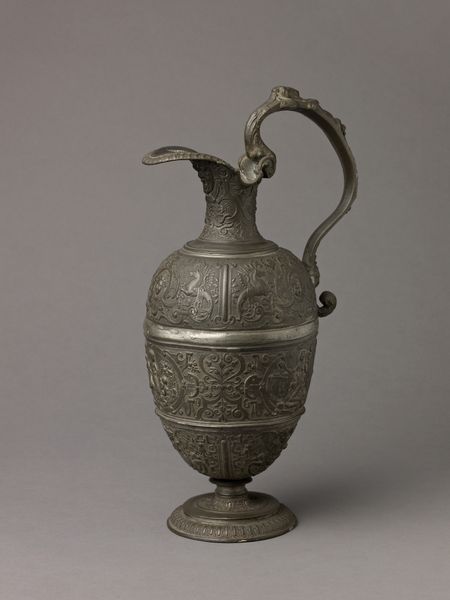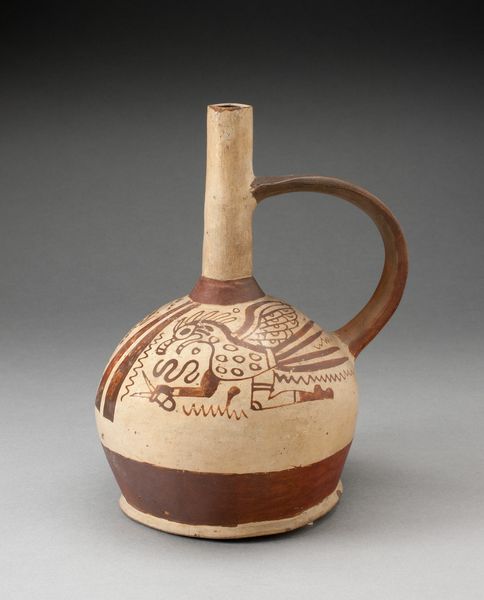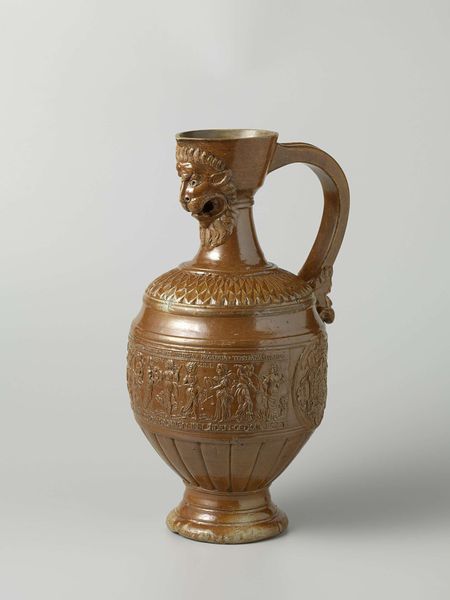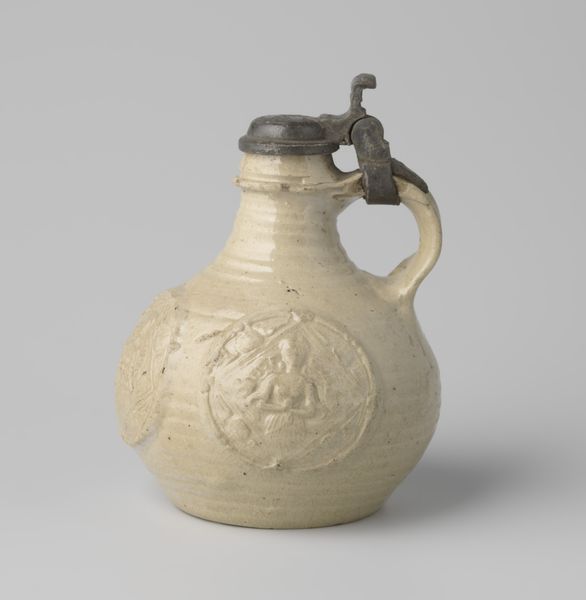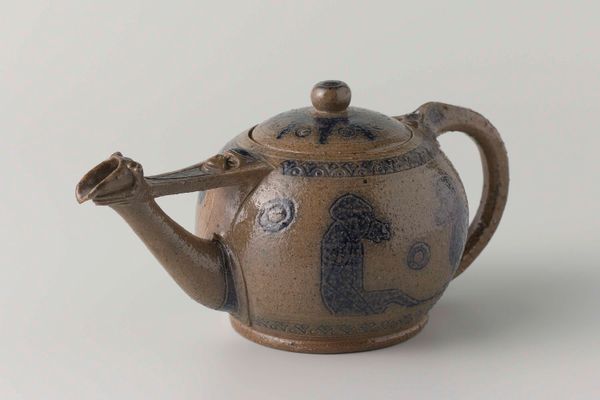
ceramic, earthenware
#
ceramic
#
11_renaissance
#
earthenware
#
stoneware
#
ceramic
#
product photography
#
decorative-art
Copyright: Rijks Museum: Open Domain
Curator: Ah, this little jug. Isn’t it wonderful? It's a stoneware piece called "Jug with a roundel in medallions", estimated to have been crafted somewhere between 1590 and 1630. Editor: It's... surprisingly sturdy. Visually weighty. The creamy off-white color and those medallions lend it a quaintness, a kind of rustic formality. Curator: Rustic formality - I love that! For me, these objects are like little whispers from another era. I can almost feel the hands that shaped it, the casual kitchen tables it once sat upon. Editor: I’m fascinated by the medallions themselves. Notice how each is contained, a world within a world. They remind me of coins, tokens of some shared cultural understanding. The details in those circular patterns probably carry layers of meaning specific to that period. What could those mean to their contemporaries? Curator: Yes, symbolism absolutely everywhere if you care to find it! Even just the act of drinking: water representing life, wine hinting at something…deeper. It reminds me of my own attempts to contain fleeting thoughts in small poems, giving form to something intangible. Editor: You’re a poet, indeed! But think about the metal lid, the contrast in textures and colours from stoneware, a symbol of craftsmanship. Someone cared about protecting the contents, about keeping them pure. What kind of cultural narrative about what’s 'precious' would the iconography around containing value point us towards? Curator: Ah, precisely! Isn’t that what art *should* do? Point towards questions, inspire stories of our own making... Though the imperfection adds warmth. Those subtle flaws remind us it was created, loved, touched. Editor: Flaws are intrinsic markers of meaning. It connects me across temporal lines to those who value something that shows evidence of real being. Looking closely is like deciphering ancient hieroglyphs. Curator: I’m still amazed by how well this little jug managed to survive the centuries. It makes me wonder what people will make of us, 400 years from now! Editor: What echoes of us will they find in these little things we leave behind, what would they interpret with such potent care of symbolism? That thought makes the present seem simultaneously immense and so… very tiny.
Comments
No comments
Be the first to comment and join the conversation on the ultimate creative platform.
